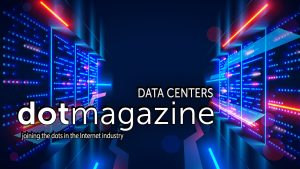Data centres are the unsung heroes of the digital world – powering businesses, governments, and individuals alike. In this month’s issue of dotmagazine, we highlight how the industry is under increasing pressure to meet skyrocketing demand for computing power while balancing sustainability, energy efficiency, and regulatory compliance. This transformation isn’t optional – it’s imperative for survival in tomorrow’s digital landscape.
Cloud computing enters a new regulatory era
Cloud operations are on the verge of a significant transformation as the EU Data Act takes effect in September 2025. Michael Hase, Manager at EuroCloud Deutschland, explains that the regulation will require cloud providers to remove vendor lock-in, improve interoperability, and phase out switching fees. While this aims to increase competition and strengthen data sovereignty, it also forces cloud vendors to adjust contracts, pricing, and infrastructure. For businesses, this shift presents an opportunity to enhance cloud flexibility and reduce reliance on single providers.
Sustainability becomes a core mission
While regulatory changes reshape cloud operations, sustainability is becoming an equally critical focus in the data centre landscape. Dr Béla Waldhauser, Spokesperson for the Alliance for Strengthening Digital Infrastructures in Germany, emphasises the role of data centres in driving urban sustainability and reducing CO₂ emissions. By integrating waste heat utilisation, AI-driven energy efficiency, and direct renewable energy procurement, data centres are becoming key contributors to Germany’s climate and digital transformation goals.
AI workloads redefine infrastructure demands
At the same time, AI-driven workloads are transforming digital infrastructure, requiring low-latency, high-performance computing environments to handle growing data volumes. Ivo Ivanov, CEO of DE-CIX, emphasises the importance of carrier-neutral interconnection, multi-cloud strategies, and direct data exchange to ensure seamless AI operations. As AI applications demand faster, more resilient connectivity, businesses must optimise interconnection strategies to enable scalable and efficient AI processing.
The rise of modular data centres
However, scalability and efficiency remain persistent challenges. Traditional data centres require significant resources, are costly to operate, and take years to build. Cornelia Lindner, COO of Cadolto Datacenter, highlights how modular data centres provide a faster, more cost-effective alternative by utilising prefabricated, scalable, and energy-efficient designs. These solutions allow businesses to expand IT infrastructure quickly while optimising energy use and operational costs. As sustainability regulations tighten, modular data centres are becoming an essential strategy for businesses looking to balance growth with environmental responsibility.
Germany at the heart of European expansion
Germany continues to lead Europe’s data centre expansion, driven by cloud adoption, edge computing, and increasing demand for sustainable IT infrastructure. Thomas Amberg, DACH Market Sales Lead at Ynvolve, outlines how the market is evolving, with colocation revenue expected to rise from $3 billion in 2025 to $4.5 billion by 2030. Frankfurt remains the dominant hub, while secondary cities like Berlin and Munich are emerging due to lower land costs and access to renewable energy. However, rapid expansion brings rising energy demands, pushing operators to invest in low-carbon cooling, renewable energy procurement, and sustainable IT asset management to balance growth with environmental responsibility.
Cyber security tightens across the EU
Beyond infrastructure, cyber security is now a critical priority as new EU regulations take effect in August 2025. Eric Clausing, IoT Lead at AV-TEST, explains that the Radio Equipment Directive (RED) and Cyber Resilience Act (CRA) will impose stricter security requirements on IoT-connected devices, cloud providers, and data centres. As cyber threats evolve, including AI-powered attacks and ransomware risks, businesses must comply with mandatory security certifications, strengthen risk mitigation strategies, and align with new CE marking requirements to ensure regulatory compliance while maintaining operational agility.




